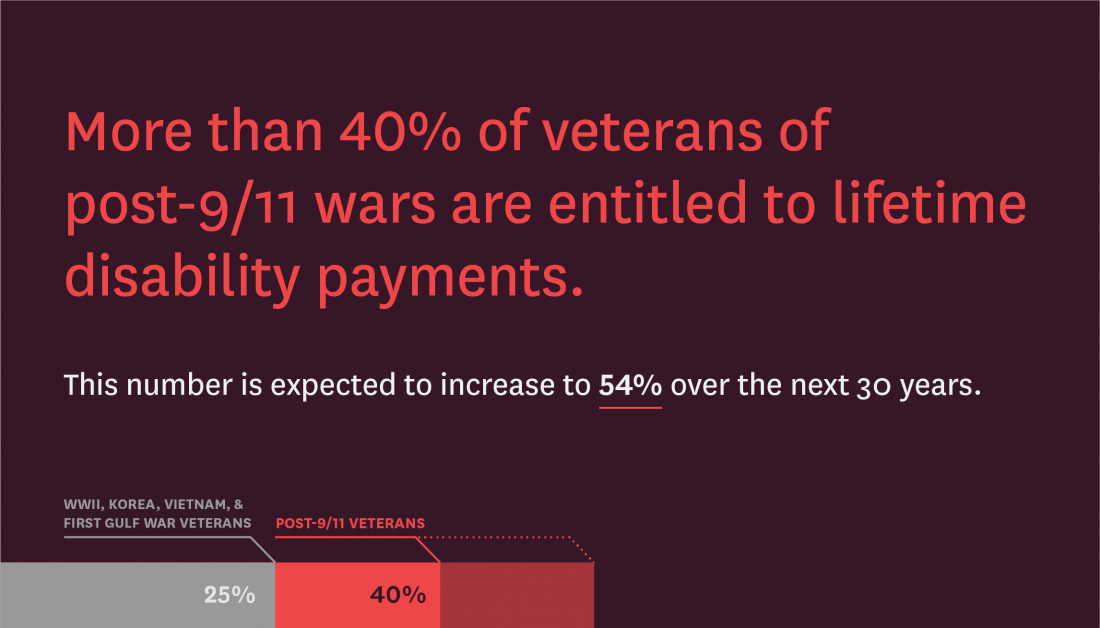Caring for U.S. Veterans

Source: The Long-Term Costs of U.S. Care for Veterans of the Afghanistan and Iraq Wars, by Linda Bilmes (2021)
Since 2001, between 1.9 and 3 million service members have served in post-9/11 war operations in Afghanistan and Iraq. Many have been wounded or injured, and suffer from conditions ranging from brain injuries to hearing loss. From FY2001 to FY2020, federal spending on veteran care doubled from 2.4% of the U.S. budget to 4.9%. The costs of caring for post-9/11 war vets will reach between $2.2 and $2.5 trillion by 2050 — most of which has not yet been paid.
The commitment to veterans continues long after wars ends. Those who have been deployed to Afghanistan and Iraq are entitled to free or subsidized medical treatment for the rest of their lives. In addition, a significant percentage of them are eligible to receive lifelong compensation for disabilities stemming from their wartime service. Veterans of the current wars are also entitled to certain educational, housing, training and other benefits funded by government agencies outside the VA.
Historically, the cost of caring for war veterans rises for several decades and peaks 30 to 40 years or more after a conflict, as veterans’ needs increase with age. This will be especially true for veterans of the current wars, who are already utilizing VA medical services and applying for disability benefits at much higher rates than in previous wars.
Finally, there are significant other costs that will be borne by these veterans and their families. Family members of the injured often give up their jobs to become unpaid caregivers and self-employed service members lose income, for example.
Although the U.S. has promised care for veterans throughout their lives, the magnitude of Iraq and Afghanistan veterans’ costs is grossly understated in government projections. There is no provision set aside to cover these future obligations and thus the U.S. risks shortchanging its veterans.
Key Findings
-
The cost of caring for war veterans peaks 30 to 40 years after a conflict, but there are no provisions to cover these future obligations in current wars.
-
Future medical and disability costs for Iraq and Afghanistan veterans will total between $2.2 trillion and $2.5 trillion.
- Uncompensated costs include loss of income for injured veterans and their family caregivers and diminished quality of life.
(Page updated as of August 2021)

